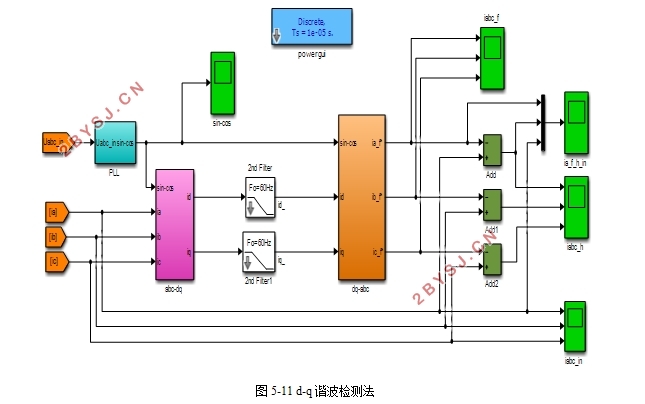电力系统谐波检测算法分析
无需注册登录,支付后按照提示操作即可获取该资料.
电力系统谐波检测算法分析(论文14000字)
摘要:本篇论文,旨在针对电力系统谐波所涉及的算法检测过程,进行相对深入的细致研究。其中,本文着重于针对以三相瞬时无功功率理论为基础,而构建出的谐波电流检测算法,进行科学合理的综合探究,并深入阐述基于该理论的p-q、i_p-i_q、d-q这三种算法的原理,并在Matlab平台上构建相应仿真系统,验证三种算法的可行性,并对比三种算法的优劣,同时通过借助PI调节器以及更改LPF截止频率的两种方式,优化改进算法,进一步增加谐波检测的精准度。实验结果表明,通过这两种方式改进后,算法在谐波检测精度上较改进之前有较大提高。
关键词:谐波检测; 瞬时无功功率; p-q;i_p-i_q; d-q;
Analysis of Harmonic Detection Algorithms in Power System
Abstract:This paper aims to conduct a relatively in-depth and detailed study on the algorithm detection process involved in power system harmonics. Among them, this paper focuses on the harmonic current detection algorithm based on the three-phase instantaneous reactive power theory, and conducts scientific and reasonable comprehensive exploration, and elaborates on p-q, i_p-i_q, d-q based on the theory. The principle of the algorithm, and build the corresponding simulation system on Matlab platform, verify the feasibility of the three algorithms, and compare the advantages and disadvantages of the three algorithms. At the same time, optimize and improve by means of PI regulator and changing the LPF cutoff frequency. The algorithm further increases the accuracy of harmonic detection. The experimental results show that after the improvement of these two methods, the algorithm has a great improvement before the harmonic detection accuracy is improved.
Key words:Harmonic Detection;Instantaneous reactive power;p-q;i_p-i_q; d-q;

目录
1 绪论 3
1.1 谐波检测的目的及意义 3
1.2 国内外研究现状及发展趋势 3
1.3 课题研究内容 4
2 电力系统谐波简介 4
2.1 谐波的基本概念 4
2.1.1 什么是谐波 4
2.1.2 谐波的表示方法 4
2.1.3 谐波的特征量 5
2.2 谐波产生的原因 6
2.3 电力系统谐波检测方法 6
3 基于瞬时无功功率的谐波检测技术 7
3.1 传统功率理论 7
3.2 三相瞬时无功功率 8
3.3 p-q谐波检测法 10
3.4 ip-iq谐波检测法 11
3.5 d-q谐波检测法 12
3.6 本章小结 13
4 改进谐波检测算法的方法 13
4.1 调节LPF截止频率 13
4.2 增加PI调节器 14
5 仿真与分析 15
5.1 Matlab简介 15
5.2 仿真模型的建立 16
5.2.1 p-q谐波检测法仿真模型 16
5.2.2 ip-iq谐波检测法仿真模型 19
5.2.3 d-q谐波检测法仿真模型 22
5.2.4 改进谐波检测法仿真模型 23
5.3 仿真实验 24
5.4 波形分析 29
5.5 本章小结 29
6 总结 30
参考文献 30
致谢 33
